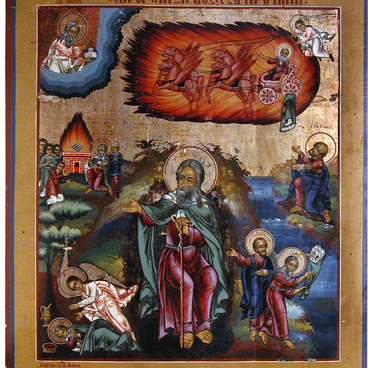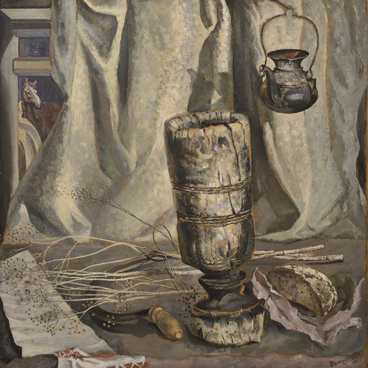Saint Nicholas is one of the most revered saints in the Orthodox world. Each Orthodox church has his icon both in side-altar and one of the rears of iconostasis. Moreover, the image of Saint Nicholas is basic in the composition of home iconostasis along with images of Pantocrator and Mother of God.
Saint Nicholas (early to mid-4th century) was a holy hierarch and archbishop from Myra in Lycia (Asia Minor). He was famous for the multiple miracles performed during his life and after his death. Since the old times Christians used to pray to him to be saved from different suffers, accidents, asked him for recovery. Saint Nicholas also patronizes travelers.
This icon refers to the type of hagiographical icons with the saint depicted in the centre, usually waist-high or full size, with the medallions with the stories from his life depicted around the perimeter. Such icons described the circle of the Saint’s life: their birth, conversion, miracles and deeds, suffers for their religion, and death. Sometimes the stories describing the wonders of the icon itself were also included in it.
The icon Saint Nicholas the Wonderworker was painted in the 19th century on the territory of the Ural-Siberian region. The certain location can’t be defined. The iconography of the saint is traditional. There’s an image of a man with a broad and high forehead, big eyes, a thin nose and a small mouth. In the Orthodox tradition it’s common to unofficially separate the images of the saint to the Winter Nicholas and Spring Nicholas depending on the day of veneration. The general difference is in presence of the winter headcloth in the image of the Winter Nicholas. According to the character of the painting, the image was made by a local icon painter for one of the churches. On the example of other icons from the museum collection, one can see the similarity in terms of colour (abundance of orange-red and ochroid tones).
As it was mentioned above, the hagiographical icons included the most well-known scenes. But there was space left for variations depending on the icon painter and their concept. The icon was supposed to tell the illiterate church goers about the saint vividly and informatively. The museum icon has a rare scene of resurrection of a baby drowned in the Dnepr, which happened as a result of the parents’ prayer to the icon depicting Saint Nicholas.
Saint Nicholas (early to mid-4th century) was a holy hierarch and archbishop from Myra in Lycia (Asia Minor). He was famous for the multiple miracles performed during his life and after his death. Since the old times Christians used to pray to him to be saved from different suffers, accidents, asked him for recovery. Saint Nicholas also patronizes travelers.
This icon refers to the type of hagiographical icons with the saint depicted in the centre, usually waist-high or full size, with the medallions with the stories from his life depicted around the perimeter. Such icons described the circle of the Saint’s life: their birth, conversion, miracles and deeds, suffers for their religion, and death. Sometimes the stories describing the wonders of the icon itself were also included in it.
The icon Saint Nicholas the Wonderworker was painted in the 19th century on the territory of the Ural-Siberian region. The certain location can’t be defined. The iconography of the saint is traditional. There’s an image of a man with a broad and high forehead, big eyes, a thin nose and a small mouth. In the Orthodox tradition it’s common to unofficially separate the images of the saint to the Winter Nicholas and Spring Nicholas depending on the day of veneration. The general difference is in presence of the winter headcloth in the image of the Winter Nicholas. According to the character of the painting, the image was made by a local icon painter for one of the churches. On the example of other icons from the museum collection, one can see the similarity in terms of colour (abundance of orange-red and ochroid tones).
As it was mentioned above, the hagiographical icons included the most well-known scenes. But there was space left for variations depending on the icon painter and their concept. The icon was supposed to tell the illiterate church goers about the saint vividly and informatively. The museum icon has a rare scene of resurrection of a baby drowned in the Dnepr, which happened as a result of the parents’ prayer to the icon depicting Saint Nicholas.

